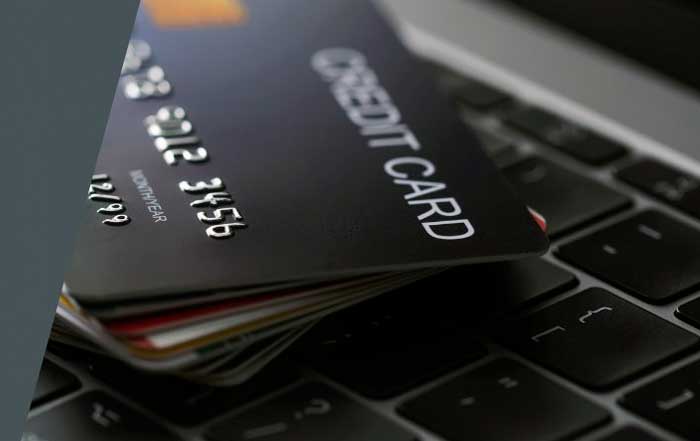The retail sector has always served as one of the most reliable indicators of the broader economic health of the United States. By observing consumer spending trends, employment patterns, and shifts in technological adoption, analysts and businesses gain a clear picture of both the resilience and vulnerabilities of the American economy. In 2025, with digital transformation accelerating, consumer expectations evolving, and global supply chains facing unprecedented challenges, the future of U.S. retail over the next five years appears both promising and complex. This article provides an in-depth economic forecast for the U.S. retail sector, drawing from a mix of historical trends, policy shifts, and forward-looking projections that will matter most to business leaders, investors, and consumers alike.
The Current State of U.S. Retail
As of 2025, U.S. retail is a $7 trillion industry, contributing significantly to GDP and employment. According to data from the U.S. Census Bureau and industry analysts, retail continues to employ more than 32 million Americans across brick-and-mortar stores, distribution hubs, logistics operations, and the rapidly growing e-commerce sector. Despite fears of stagnation following the global pandemic years, retail spending has remained resilient, fueled by rising wages, consumer credit availability, and a culture of consumption that has long characterized American society.
Key sectors currently leading retail growth include groceries, e-commerce, home improvement, and health and wellness. While inflationary pressures and fluctuating interest rates have influenced consumer purchasing power, the industry has shown adaptability through digital innovation, omnichannel strategies, and supply chain diversification.
For readers of USA Update, these dynamics represent more than just statistics—they embody the pulse of American households, businesses, and communities.
Macroeconomic Drivers Influencing Retail
Consumer Spending Power
Retail growth depends heavily on consumer confidence and disposable income. With the U.S. economy projected to expand at an average annual rate of around 2% between 2025 and 2030, retail sales are expected to grow steadily, though at a slower pace compared to the post-pandemic rebound years. Inflation, while moderating, will continue to influence household budgets. The Federal Reserve’s interest rate adjustments will also play a critical role in shaping consumer borrowing and credit usage.
Labor Market and Employment Trends
The health of the labor market directly correlates with retail performance. With unemployment expected to stabilize around 4%, wages will likely continue rising, particularly in sectors like logistics, warehousing, and retail services. However, staffing challenges, especially in seasonal and frontline retail jobs, could pose operational hurdles for companies. To explore more on evolving workforce challenges, readers can visit USA Update’s employment insights.
Global Supply Chains
International trade disruptions, climate-related events, and geopolitical tensions will remain critical factors in retail cost structures and inventory availability. The push for supply chain resilience will see more companies adopting nearshoring and regional partnerships, particularly with Mexico and Canada under the USMCA framework. Learn more about broader international business shifts.
The Rise of E-Commerce and Omnichannel Strategies
Perhaps the most defining trend shaping retail in the next five years is the dominance of e-commerce and the evolution of omnichannel strategies. In 2025, e-commerce represents over 25% of total U.S. retail sales, a figure projected to climb toward 35% by 2030. Amazon, Walmart, and Target continue to dominate, but niche e-commerce platforms and direct-to-consumer brands are capturing market share by catering to specialized demographics and offering personalized experiences.
Retailers are also investing heavily in integrating physical and digital operations. Buy-online-pickup-in-store (BOPIS), same-day delivery, and AI-driven personalization have become standard expectations rather than optional perks. Companies leveraging data analytics to anticipate customer preferences will likely outperform those that remain reliant on traditional sales models.
Readers can learn more about the evolving role of technology in retail by exploring USA Update’s technology coverage.
Demographic Shifts and Consumer Preferences
Gen Z and Millennials
Over the next five years, Gen Z and Millennials will account for more than half of U.S. consumer spending. These generations prioritize sustainability, convenience, and authenticity. They are more likely to support brands with clear ethical practices and transparent supply chains. Retailers ignoring these values risk losing relevance.
Aging Population
At the same time, America’s aging population will demand more healthcare products, accessible shopping experiences, and home delivery services. Retailers serving these demographics will likely see steady growth, particularly in health and wellness categories.
Urban vs. Suburban Dynamics
Urban retail remains vibrant, but suburban and rural markets are seeing renewed investment as remote work continues to reshape population patterns. Grocery chains, discount retailers, and e-commerce logistics hubs are expanding to cater to communities outside traditional metropolitan centers. Readers can explore related business trends in the U.S. economy.
The Role of Technology in Shaping Retail
Technology will remain the backbone of retail transformation. Artificial intelligence, machine learning, robotics, and blockchain are no longer experimental tools—they are central to competitiveness.
Artificial Intelligence: Retailers are deploying AI for demand forecasting, inventory management, and personalized marketing.
Robotics and Automation: Warehouses are increasingly automated, and robotics are making their way into in-store operations for tasks such as shelf management.
Blockchain: Enhancing transparency in supply chains and combating counterfeit products.
Augmented Reality and Virtual Reality: Allowing consumers to try products digitally before purchase, especially in fashion, cosmetics, and home furnishing.
These innovations align with the broader technological transformations detailed in USA Update’s business and finance sections.
U.S. Retail Evolution Roadmap 2025-2030
2025: Foundation Year
Retailers consolidate pandemic-era tech gains. Membership and loyalty ecosystems expand with tangible benefits. Major investment in warehouse automation and AI forecasting begins.
2026: Returns Revolution
Returns optimization becomes key cost-reduction focus. Nearshoring pilots accelerate in apparel. Climate-proofing of stores and distribution centers gains momentum.
2027: Media Monetization
Retail media's profit contribution becomes unmistakable. Second wave of store remodeling adds micro-fulfillment capacity and faster curbside operations.
2028: AI Integration
Assortment curation tightens to optimize working capital. AI copilots for associates roll out broadly. Cross-border marketplaces mature with simplified returns.
2029-30: Full Convergence
Digital-physical convergence complete. Ubiquitous inventory transparency, frictionless checkout, and service differentiation over price in premium segments.
E-commerce Growth
25% → 35%
Share of total retail sales
Market Size
$7T+ Industry
32M+ Americans employed
Annual Growth
2-3% Avg
Steady expansion 2025-2030
Sector-by-Sector Forecast
The retail landscape in the United States is not a monolith. It is a vast ecosystem that spans grocery, fashion, luxury, electronics, health, home improvement, and digital-only channels. Each sector carries its own opportunities and vulnerabilities, yet together they form the backbone of American consumer life. As the next five years unfold, the performance of each subsector will be heavily influenced by macroeconomic conditions, technological adoption, and demographic forces.
Grocery and Essential Retail
Grocery retail remains the most stable pillar of the industry. Regardless of economic uncertainty, Americans spend consistently on food and essential goods. The forecast from 2025 to 2030 suggests that grocery will grow by approximately 3–4% annually, with online grocery shopping taking a larger share. By 2030, nearly 25% of grocery purchases are expected to occur online, facilitated by advanced delivery networks and artificial intelligence–driven demand forecasting.
Walmart (Walmart.com) leads the sector, blending its unmatched brick-and-mortar footprint with an expanding digital platform. Investments in last-mile delivery, drone technology, and partnerships with delivery startups will ensure Walmart remains the dominant grocery and general merchandise retailer in the United States.
Other grocery leaders such as Costco (Costco.com) and Kroger continue to refine membership models and loyalty programs to maintain customer retention. Costco’s emphasis on bulk savings and private-label branding, combined with Kroger’s strong digital presence and partnership with Ocado for automated warehouses, makes them formidable competitors in the evolving grocery market.
Fashion and Apparel
The fashion retail industry is expected to undergo significant transformation. Over the next five years, apparel sales are projected to grow at 2–3% annually, but much of this growth will be captured online. Fast-fashion companies will continue to dominate through affordability and convenience, but consumer backlash over sustainability will pressure brands to adopt ethical supply chains and circular economy models.
Target (Target.com) will play a central role in merging affordable fashion with digital convenience, leveraging collaborations with designers and influencers to engage younger demographics. Luxury fashion, on the other hand, will see steady growth among affluent consumers, with companies like Nordstrom investing heavily in digital channels to remain relevant.
Sustainability will become more than a trend—it will become an expectation. Brands that can demonstrate authenticity and measurable progress toward environmentally responsible practices will outperform those that rely on marketing slogans alone. Readers can follow how retail sustainability intersects with broader consumer trends.
Electronics and Technology Retail
Consumer electronics will remain one of the most dynamic retail categories. From 2025 to 2030, analysts project an annual growth rate of 5–6%, fueled by demand for smart home devices, wearables, and augmented reality tools.
Amazon (Amazon.com), the largest U.S. e-commerce platform, will continue dominating this category by leveraging its data-driven personalization, vast logistics network, and continued expansion into electronics manufacturing through private-label products. Amazon’s strength lies not just in selling products but in creating ecosystems like Alexa-powered smart homes that lock customers into recurring purchases and subscriptions.
Retailers such as Best Buy will remain competitive by focusing on customer service, in-store experiences, and installation support—areas where pure-play e-commerce platforms face limitations. With the rise of AI-driven products and connected devices, consumers will prioritize reliability, service, and expertise alongside competitive pricing. Explore broader technology shifts shaping business.
Health, Wellness, and Lifestyle
The health and wellness retail sector is expected to expand rapidly, driven by demographic aging, lifestyle changes, and growing awareness of preventive health. Between 2025 and 2030, the sector is forecast to grow at 7–8% annually, outpacing nearly all other retail categories.
Pharmacies and health-focused retailers are expanding beyond traditional models. CVS Health and Walgreens are evolving into healthcare hubs that combine retail, pharmacy, and clinical services. At the same time, lifestyle retailers focusing on fitness equipment, nutritional products, and home wellness are experiencing surges in demand, especially as remote work culture continues to encourage at-home health investments.
Digital-first wellness brands and subscription models are capturing younger demographics that prefer customized vitamins, fitness apps, and telemedicine-enabled retail. To follow how these trends connect with everyday living, readers can explore lifestyle insights.
Home Improvement and Furniture
Driven by remote work patterns and an aging housing stock, home improvement retail will continue to thrive. Growth in this sector is projected at 4–5% annually through 2030. Home Depot and Lowe’s dominate the space, focusing on DIY enthusiasts, professional contractors, and homeowners eager to upgrade living environments.
Home Depot’s investment in omnichannel logistics, combined with Lowe’s focus on rural and suburban markets, ensures both companies will see consistent expansion. Furniture and home décor retailers are also turning toward sustainability, offering eco-friendly designs and modular solutions that appeal to environmentally conscious Millennials and Gen Z households. Learn more about U.S. economic transformations in housing and retail.
International and Global Impacts on U.S. Retail
Retail in the United States cannot be analyzed in isolation. Global supply chains, currency fluctuations, and international trade agreements will continue shaping costs, availability, and consumer prices. The strengthening of U.S. trade ties within North America and Europe will promote stability, while tensions in Asia may present risks related to electronics and apparel imports.
U.S. retailers with global footprints, such as Walmart and Amazon, will continue leveraging their international operations to buffer domestic market volatility. However, as European and Asian competitors expand their reach, U.S. companies will face pressure to innovate and adapt. Readers can gain further context by exploring international economic coverage.
Financial Outlook for Retailers
Over the next five years, profitability across U.S. retail will hinge on three key areas: cost control, digital transformation, and consumer loyalty. Rising wages, sustainability investments, and technological upgrades will weigh on margins, but retailers that successfully blend physical and digital channels will maintain growth.
Financial analysts forecast that major retailers such as Walmart, Amazon, Costco, Target, and Home Depot will remain the five dominant players, representing over 50% of total retail revenue growth through 2030. These companies’ size, global reach, and technological investments position them to set the pace for the broader industry. Readers can explore additional finance insights on retail.
Risks, Policy Shifts, and Scenario Planning (2025–2030)
Inflation, Interest Rates, and Household Balance Sheets
Inflation’s retreat from its early-2020s highs resets the stage for a more nuanced environment in which price pressures fluctuate by category rather than rising uniformly across the basket, and this dispersion matters to retail planning because it reveals where price elasticity is most pronounced and where shoppers are willing to trade up. If the Federal Reserve holds policy rates higher for longer to anchor inflation expectations, financing costs for retailers—from inventory lines to store remodels—remain elevated, tilting the advantage to scale players with strong cash conversion cycles and investment-grade balance sheets. A benign scenario features core inflation gliding closer to target with gradual rate normalization, supporting steady volume growth across essentials and discretionary categories; a downside scenario sees inflation re-accelerate on energy or supply-chain shocks, compressing real incomes and shifting spend toward private label and value channels. Readers following rate and inflation developments can monitor broader U.S. macro coverage on economy and near-term news.
Household balance sheets will bifurcate further. Affluent consumers, buoyed by equity and housing wealth, keep premium segments resilient, while middle-income households navigate tighter credit conditions and the resumption of long-term repayment obligations that crowd out discretionary purchases. Retailers that tailor assortments to these diverging realities—premium edits alongside sharp opening price points—will outperform. To stay current with category-specific consumer dynamics, explore our ongoing consumer and business reporting.
Labor Market, Wages, and Productivity
Labor remains the heartbeat of retail execution, and wage floors have structurally risen across frontline roles, delivery networks, and distribution centers. In a steady-growth scenario, wage growth cools but remains above pre-pandemic averages, pushing retailers to automate repetitive tasks and redesign work to elevate productivity per labor hour. In a stress scenario featuring renewed labor tightness, retailers lean more on robotics, task-based scheduling, and cross-training, while experimenting with four-day weeks in distribution to improve retention. Coverage of hiring and mobility trends can be found in jobs and employment.
Regulation, Antitrust, and the Data Imperative
Regulatory scrutiny will intensify across three fronts: competition policy, data privacy, and consumer fee transparency. Large platforms and mass merchants face closer examination of marketplace practices, self-preferencing, and data use that blends retail media with shopper targeting. A constructive path forward centers on privacy-by-design architectures, cleaner consent frameworks, and third-party auditability of ad attribution models. Retailers that invest early in compliant identity resolution and first-party data governance will be able to scale retail media networks without regulatory friction. For ongoing policy and compliance developments, follow our regulation desk.
Energy and Supply Chain Resilience
Energy prices will continue to act as a stealth tax on logistics when they spike, while also influencing store utilities and cold chain costs. A base-case outlook assumes moderate volatility with occasional weather-driven spikes; a high-volatility scenario—triggered by geopolitical events or extreme climate episodes—would raise transportation surcharges and lengthen delivery lead times. Retailers can cushion volatility through diversified carriers, inventory placement closer to demand, and investment in energy efficiency and on-site renewables at distribution nodes. Explore related developments in energy and supply-chain events on our events page.
Cybersecurity, Fraud, and Trust
As payments and loyalty programs expand, fraud vectors multiply—from account takeovers to synthetic identities. The trust premium will rise: companies that visibly protect consumer identities, apply real-time risk scoring at checkout, and communicate transparently about incidents will sustain loyalty. The most advanced players integrate biometric authentication in mobile apps and unify fraud rules across ecommerce, stores, and marketplaces to avoid whack-a-mole risk.
Climate, ESG, and Circularity
Climate adaptation costs—storm-hardening stores, retrofitting HVAC, and reinforcing cold chains—will escalate throughout the decade, particularly for coastal footprints. Yet sustainability is not merely a compliance item; circularity unlocks margin by reducing returns, re-commerceing high-value categories, and cutting packaging waste. Leaders will treat ESG as an operating system: quantifying scope-3 emissions, designing for repairability, and using blockchain-anchored chain-of-custody for high-risk materials. Learn more about enterprise sustainability moves and how they intersect with retail profitability through our business and technology sections.
How the Big Five Will Shape the Market
The gravitational pull of the five largest U.S. retailers—Walmart, Amazon, Costco, Target, and The Home Depot—will define benchmarks for price, service, and experience across the industry. Their strategies illuminate where value is created and where the competitive bar is moving.
Walmart: Everyday Value, Everywhere
Walmart continues to orchestrate a flywheel spanning mass retail, grocery, last-mile networks, and a fast-scaling retail media platform that monetizes first-party shopper data. Expect further integration of membership benefits across delivery, fuel savings, and health services, and a tighter connection between marketplace assortments and store adjacency. Walmart’s focus on automation—from micro-fulfillment to DC robotics—keeps unit economics favorable even in wage-tight markets. Visit walmart.com to observe assortment breadth and evolving omnichannel services.
Amazon: Logistics as a Moat, Data as an Engine
Amazon will lean on sub-same-day speed in dense metros, AI-assisted search and merchandising, and a growing constellation of private-label and exclusive brands. Amazon’s edge is less about any single product and more about the platform’s ability to compress time between intent and satisfaction while improving discovery through recommendation algorithms. The continued build-out of Buy with Prime and integration of physical formats, including Amazon Fresh and Amazon Go, will refine hybrid shopping. Explore current consumer experiences on amazon.com.
Costco: Membership Model Mastery
Costco sustains one of the most defensible moats in retail by converting membership loyalty into scale procurement advantages that fuel low prices and curated treasure-hunt merchandising. Expect continued emphasis on Kirkland Signature quality, measured global expansion, and incremental digital conveniences that preserve the club-first experience without surrendering the economics of in-warehouse traffic. See assortment and membership details at costco.com.
Target: Design, Curation, and Owned Brands
Target differentiates through owned-brand design, curated in-aisle discovery, and frictionless fulfillment options like Drive Up that convert everyday trips into high-frequency loyalty. The playbook ahead pairs store-as-hub logistics with premium-value private labels and carefully chosen national brand partnerships, sustaining both traffic and margin. Review assortment strategy at target.com.
The Home Depot: Pro Customer, Project-Centric Scale
The Home Depot remains the bellwether for home improvement demand, with outsized focus on the Pro contractor and project bundles that reduce friction from planning to pickup. Investment in job-site delivery, tool rental ecosystems, and connected inventory visibility will lift share with Pros while maintaining the DIY franchise. Explore retail and project tools at homedepot.com.
Collectively, these five set expectations industry-wide: price trust, reliable delivery windows, transparent inventory, and consistent digital-to-store handoffs. Tier-two players will succeed where they differentiate—through category authority, service layers, or localized relevance—rather than attempting to mirror scale economics they cannot match.
Category Playbooks, KPIs, and Investment Priorities
Grocery and Mass
Assortment and Value: Expand private label tiers that serve both value seekers and premium wellness buyers; create “essentials baskets” with locked-in prices for 90-day windows to stabilize household planning.
Cold Chain Excellence: Invest in energy-efficient refrigeration, IoT monitoring, and predictive maintenance to cut shrink and energy use.
KPIs: On-shelf availability, fresh shrink rate, delivery promise accuracy, and private label penetration.
Apparel and Footwear
Speed-to-Trend: Shorten design-to-shelf cycles using collaborative planning tools and nearshore pilots for capsules; apply demand sensing to minimize markdowns.
Returns and Fit: Deploy virtual try-on and size-prediction to reduce reverse logistics costs; convert returns into exchanges or credit via frictionless kiosks.
KPIs: Full-price sell-through, return rate, average days in cycle, and contribution margin after returns.
Electronics and Hardlines
Attach and Services: Bundle installation, extended protection, and trade-in credits to offset category deflation and create lifetime value.
Experiential Corners: Use live demos and creator partnerships to translate specs into benefits.
KPIs: Attachment rate, NPS post-installation, and repeat service uptake.
Health, Beauty, and Wellness
Personalization: Combine diagnostics, subscription refills, and pharmacist or clinician consultations in-app; surface ingredient transparency.
Compliance and Trust: Maintain medical-grade data protections for telepharmacy and digital therapeutics.
KPIs: Subscription retention, clinical conversion, and adherence-linked outcomes.
Home Improvement and Décor
Project Journeys: Offer end-to-end project paths—design tools, BOM lists, delivery scheduling, and financing options tailored to project milestones.
Pro Loyalty: Volume-based rewards tied to job pipelines and crew scheduling; integrate with construction management platforms.
KPIs: Pro share of revenue, project completion on-time, and repeat purchase velocity by project stage.
Investment priorities across all categories converge on advanced forecasting, last-mile optimization, and retail media monetization. To follow corporate strategy shifts as they intersect with markets, continue with our finance and technology coverage.
Store of the Future—Design, Data, and Operations
Physical Space as a Performance Asset
The most successful retailers will treat stores like high-throughput performance assets rather than static showrooms. Backrooms evolve into micro-fulfillment nodes; front-of-house becomes a storytelling canvas that translates brand values into tactile proof points. Flexible fixtures enable rapid seasonal pivots; sensors inform planogram optimization in near real time.
Frictionless Checkout and Identity
Mobile self-checkout, computer-vision-assisted exits, and RFID-based basket reads will accelerate, but the winning implementations keep a staffed lane for complex transactions and accessibility. Digital identity—anchored in the retailer’s app—ties together loyalty, payments, and receiptless returns. Where permissible, biometric options reduce friction while strengthening fraud controls.
Retail Media Networks (RMNs) and Monetization
The most profitable square foot in a modern store may be the data exhaust it generates. RMNs convert anonymized shopper signals into high-margin ad products across onsite, in-app, and offsite channels. Leaders will differentiate through closed-loop measurement that ties impressions to verified sales, with third-party verification to preserve trust. This is where scale becomes flywheel: traffic begets data; data begets better targeting; better targeting funds lower prices.
AI at the Core
AI models will sit at the heart of demand planning, markdown optimization, and one-to-one content generation. The practical test is governance: models must be auditable, bias-checked, and continuously refreshed. Retailers that stand up MLOps disciplines—version control for models, automated monitoring, and roll-back protocols—will turn AI from experiment to enterprise utility. For ongoing coverage of AI in commerce, see technology and broader news.
International Currents Shaping U.S. Retail
Trade, Nearshoring, and Currency
North American nearshoring will continue to advance where automation and freight savings offset labor differentials. Mexico’s manufacturing ascendance and Canada’s role in integrated supply webs reduce exposure to long-haul disruptions, even as Asia remains indispensable in electronics and apparel. A stronger dollar dampens inbound tourism spend but lowers input costs on imported goods; a weaker dollar does the reverse. Our international desk tracks these crosscurrents as they ripple into price tags and promotions.
Global Competitors and Cross-Border Marketplaces
European and Asian marketplace operators are increasingly salient to U.S. shoppers, especially in fashion and home. U.S. incumbents will respond with faster cross-border shipping options, expanded creator marketplaces, and stricter quality and authenticity controls. Duty-inclusive pricing and easy returns will become table stakes for cross-border growth.
Travel Retail and Duty-Free Recovery
As international travel normalizes, airport and tourist-district retail rebounds, with premium beauty, electronics accessories, and luxury outperforming. This channel disproportionately benefits brands with high brand-story density per square foot. Readers can follow hospitality and inflow trends on our travel page.
Capital Markets, M&A, and the Next Wave of Winners
Consolidation and Vertical Integration
Expect continued consolidation where scale economics matter—grocery logistics, convenience, and specialty categories with overlapping footprints. Private equity will target carve-outs of non-core banners, while strategic acquirers pursue adjacencies that compress the time to capability, such as last-mile networks or healthcare services inside retail. For market-moving updates and executive moves, monitor news and finance.
IPO Windows and Specialty Disruptors
When windows open, profitable, unit-economics-positive specialty retailers with capital-light formats will test public markets, especially those anchored in subscription replenishment or B2B2C distribution. The hurdle is durability: investors will prioritize models with sticky cohorts, low CAC payback, and clear paths to free cash flow.
What KPIs Will Public Markets Reward?
Public investors will reward retailers that show expanding gross margin dollars per square foot, stable inventory turns despite SKU proliferation, and rising high-margin media or services mix. Cash discipline returns to vogue: capex with quick paybacks, tight working capital, and balanced shareholder returns.
What It Means for Small and Mid-Sized Retailers
Compete Where Scale Is Not the Only Advantage
Regional banners and digital natives win by mixing local relevance, community presence, and distinctive curation. The mandate is to avoid direct confrontation with the Big Five on their strongest dimensions and instead choose battles where personal service, expert advice, and niche authority drive loyalty.
The Minimum Viable Tech Stack
A modern stack includes headless commerce, unified inventory, OMS for ship-from-store, CDP for first-party data, and pragmatic AI for recommendations and search. Outsource non-differentiating layers, but keep strategic control over data models and customer identity. Our technology and business pages frequently profile practical implementations.
Community, Events, and Entertainment
Retail aligns naturally with entertainment when stores become stages—live product drops, creator meetups, and micro-workshops that convert social engagement into store traffic. For examples and trend coverage, browse entertainment and calendar-driven events.
Strategic Roadmap—Twelve Moves for the Next Five Years
Codify a Barbell Value Proposition: Pair sharp opening price points with premium edits to serve polarized wallets.
Build a Real-Time Inventory Graph: Achieve SKU-level visibility across DCs, stores, and vendors; expose accurate promises to customers.
Re-architect Last Mile: Mix owned fleets, gig networks, lockers, and dynamic cutoff times to protect economics.
Treat Returns as a Channel: Incentivize exchange over refund; turn returns into upsell moments with instant credit.
Own Identity and Consent: First-party data, encrypted IDs, and transparent value exchange through loyalty benefits.
Operationalize AI Safely: Establish model governance, human-in-the-loop for edge cases, and continuous A/B testing.
Harden the Attack Surface: Zero-trust architectures, tokenized payments, and real-time fraud scoring at checkout and account layers.
Design for Circularity: Offer repair, resale, and refill programs; publish measurable footprint reductions.
Localize and Personalize: Dynamic planograms, regional assortments, and localized campaigns driven by CDP insights.
Incentivize Field Innovation: Push decision rights to store and regional leaders with data tools and bounded guardrails.
Monetize Attention: Scale retail media with verified closed-loop attribution; maintain clear shopper value and frequency caps.
Measure What Matters: Shift from pure sales comps to profitable growth metrics—gross margin dollars per labor hour, per delivery, and per square foot.
A Year-by-Year Outlook
2025
Retailers consolidate pandemic-era tech gains into stable, governed platforms. Membership and loyalty ecosystems expand, with more tangible benefits that offset price sensitivity. Expect sustained investment in warehouse automation and practical AI for forecasting.
2026
Returns optimization and reverse logistics become C-suites’ favorite cost-out lever. Retailers accelerate nearshoring pilots in apparel basics and certain hardlines to shorten lead times and hedge freight volatility. Weather-proofing of stores and DCs gathers pace after a cycle of extreme climate events.
2027
Retail media’s contribution to profit pools becomes unmistakable; CFOs push for standardized measurement and third-party verification. Store estates undergo a second wave of remodeling to add more backroom fulfillment capacity and faster curbside flows.
2028
Assortment curation tightens as retailers reduce long-tail SKUs that dilute working capital. AI copilots for associates roll out broadly, raising service quality while compressing onboarding times. Cross-border marketplaces mature with duty-inclusive pricing and simplified returns.
2029–2030
The industry’s digital and physical convergence feels complete to consumers: inventory transparency is ubiquitous; checkout choices are a given; service layers differentiate more than price in premium and specialty segments. Winners show disciplined capital allocation, resilient supply chains, and high-trust data practices; laggards face consolidation or reinvention.
Resources and Further Reading—External and Internal
To deepen context on policy, labor, and consumer dynamics, readers can explore high-quality resources such as the Federal Reserve’s monetary policy pages (federalreserve.gov), the U.S. Bureau of Labor Statistics for employment and wage data (bls.gov), the U.S. Census Bureau for retail indicators (census.gov), the Bureau of Economic Analysis for personal consumption trends (bea.gov), the National Retail Federation’s industry insights (nrf.com), the U.S. International Trade Commission for trade and tariff updates (usitc.gov), the Federal Trade Commission for consumer protection and advertising guidance (ftc.gov), the U.S. Department of Energy for energy price and efficiency programs (energy.gov), the U.S. Department of Agriculture for food price outlooks (usda.gov), and the Consumer Financial Protection Bureau for credit market conditions (consumerfinance.gov). For company-level perspectives, visit the Big Five: Walmart (walmart.com), Amazon (amazon.com), Costco (costco.com), Target (target.com), and The Home Depot (homedepot.com).
Internally on USA Update, the following sections will help readers connect this forecast to related beats: economy, finance, business, technology, consumer, news, events, jobs, employment, energy, and international.
A Confident, Clear-Eyed Outlook for U.S. Retail?
The economic forecast for U.S. retail over the next five years balances confidence in American consumer dynamism with sober recognition of structural challenges. The confidence rests on durable drivers—employment, innovation, and the unmatched entrepreneurial capacity of the U.S. retail ecosystem. The caution acknowledges that margin expansion is no longer a passive windfall; it must be earned through operational excellence, disciplined capital allocation, and trust-centric data practices.
For leaders charting strategy, the imperative is to build moats that compound: operational moats from inventory visibility and last-mile reliability; relationship moats from loyalty programs that solve real problems; data moats from consented first-party relationships anchored in privacy and value. For investors, the signal lies in retailers that convert attention into measurable return, bend logistics cost curves downward with technology, and free working capital without starving innovation. And for communities, the future of retail is not just about what is sold but how—through stores that are more sustainable, accessible, and participatory.
From mass merchants to specialist banners, from physical aisles to digital feeds, American retail is entering a period where excellence is visible and rewarded. The winners of 2030 will be those who use the next five years to make every process smarter, every promise more reliable, and every customer interaction more meaningful. Readers who want to track these shifts as they happen can explore ongoing coverage across economy, finance, business, technology, and breaking news at USA-Update.com.










